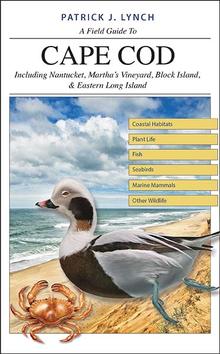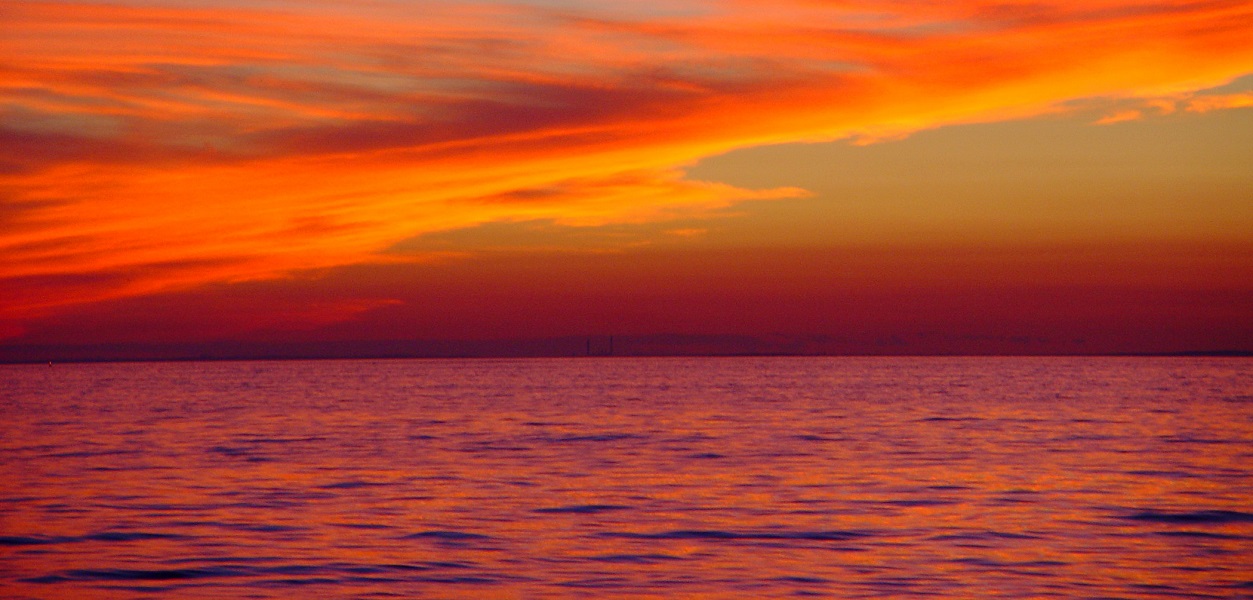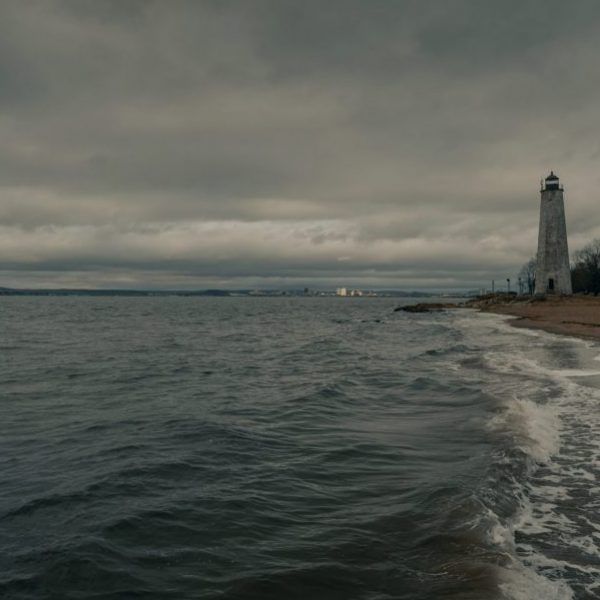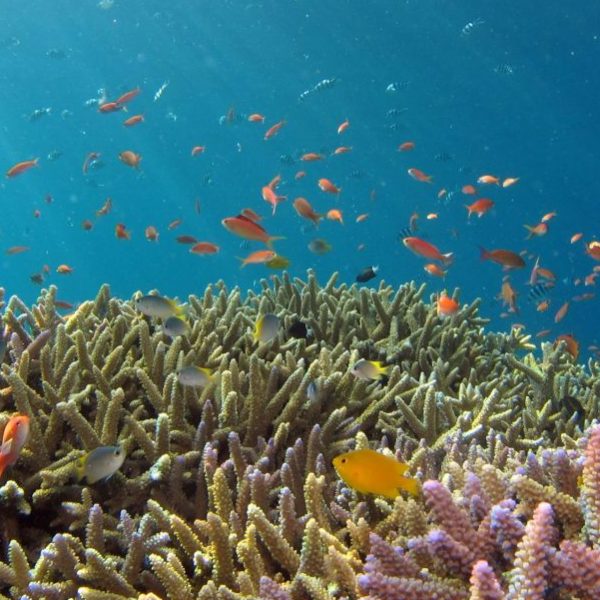The Great Whales of Stellwagen Bank
Patrick J. Lynch—

Just north of the northern tip of Cape Cod, Stellwagen Bank is an underwater glacial outwash plain that rises above the deeper waters of the southern Gulf of Maine. The bank can be as shallow as 65–100 feet deep at its southern end, but the waters immediately east and north of the bank can be as deep as 800 feet. Since 1992 the bank has been the core of Stellwagen Bank National Marine Sanctuary, created to recognize and protect the unique and abundant marine life of the area. The Bank is one of the best whale watching sites in the world, and typically offers good looks at the world’s rarest large mammal, the North Atlantic Right Whale. From late April to late October there are daily trips to the Bank from Provincetown and Plymouth, Massachusetts that make one of country’s best wildlife viewing opportunities.
Stellwagen Bank is visited nearly every year by a range of great whales and large dolphins, including the Blue Whale, Fin Whale, Sei Whale, Common Minke Whale, Orca (Killer Whale), Risso’s Dolphin (Grampus), Long-Finned Pilot Whale, Atlantic White-Sided Dolphin, White-Beaked Dolphin, Common Dolphin, and Bottlenose Dolphin. Many of these species, however, enter the Gulf of Maine only sporadically in small numbers or in winter months when whale-watching trips are not available, so we’ll concentrate on the three great whale species that are seen frequently on whale watches on or near Stellwagen Bank, Cape Cod Bay, and other areas off New England.
North Atlantic Right Whale
The severely endangered North Atlantic Right Whale enters Stellwagen Bank and Cape Cod Bay waters in spring, as the Western North Atlantic population migrates north from the coastal waters off Florida, Georgia, and South Carolina, where they give birth to calves. The best time of year to see Right Whales in New England waters is late April, when whale-watching fleets from Provincetown and other Cape Cod Bay ports begin their operations for the year. Because these whales are so endangered there are very strict limits for approaching them, so the views from whale-watching boats are often distant, but for dedicated whale watchers the trips to see one of the Atlantic Ocean’s rarest animals is worthwhile. In 2019 about 411 North Atlantic Right Whales were counted in East Coast waters from central Florida north to the Gulf of Maine and Bay of Fundy. In the breeding season of 2018 researchers saw no live births of North Atlantic Right Whales, a shocking decline in an already endangered population. However, this year researchers have counted five healthy Right Whale calves in their breeding grounds off northern Florida and southern Georgia, an encouraging sign after a disastrous 2018.

As the spring weather warms the Right Whales drift north in the Gulf of Maine, to the shallow banks south of Nova Scotia, and into the Bay of Fundy. Cape Cod whale watchers have another chance to see Right Whales in late-season trips to Stellwagen Bank, in late October, as the Right Whales move south to their winter calving grounds off the southeast U.S. coast.
Humpback Whales
Each year the Humpback Whales of Stellwagen Bank make a 3,000-mile migration along the East Coast. Only in the early 1990s did scientists confirm that the whales we see off the New England coast migrate to winter and give birth to calves in the eastern Caribbean in the deep waters off the Greater Antilles (Cuba, Puerto Rico, and Hispaniola), the Lesser Antilles, and even as far south as Trinidad and Tobago, just off the South American coast. As the weather warms in spring the Western Atlantic Humpback Whale population moves up the East Coast, probably using the Gulf Stream as a warm assist as they move north. Many Humpbacks pass by the New England area and continue on to the banks off the Canadian Maritimes, Greenland, Iceland, and even northern Norway. Luckily, hundreds of Humpbacks summer in the rich waters of the Gulf of Maine and the Great South Channel just east of Cape Cod and Nantucket. About 820 Humpback Whales were reported in the Gulf of Maine and Bay of Fundy areas in 2016, and the population of Humpbacks has been growing slowly over the past decade.

In recent years small numbers of Humpbacks have summered in the New York Bight south of Long Island, and even Long Island Sound and New York Harbor have had sporadic reports of Humpbacks. It is thought that the new presence of Humpbacks and other large whales in New York waters is an indication of the growing population of Atlantic Menhaden, an important forage fish species that has received attention from conservationists and US government biologists.
Fin Whales
Fin whales are frequently seen by whale watchers in the Stellwagen Bank and Great South Channel and sometimes in the waters south of Long Island, especially during spring and fall migration. Like all the world’s large whale species, Fin Whales are threatened, with about 1,600 individual Fins in the region from the mid-Florida coastline to the Bay of Fundy.
These days the primary threats to Fin Whales are collisions with ships, entanglement in fishing gear, and the overharvesting of forage food species like Atlantic Herring, Atlantic Menhaden, and Atlantic Mackerel. Fin Whales are known to undertake seasonal migrations, north in the warmer months and south as winter approaches, but the data on exactly where Fin Whales winter and calve are slim at present. Whale scientists are able to follow individual Fin Whales by their unique chevron markings, dorsal fin shape, and other physical details, which are unique in each animal. There is good evidence that the Fin Whales around Stellwagen Bank and the New England coast return year after year to the same feeding grounds.

Fin Whales are less well known among whale watchers because they show little curiosity or tolerance for boats, engage in few highly visible surface behaviors, and often leave the area quickly when whale-watching boats arrive. However, Fin Whales are not only the second largest animal on earth (only the Blue Whale is larger) but the second-largest animal ever to have lived on earth—far larger than any dinosaur or extinct marine animal. Fin Whales are huge and can travel at six to eight knots. Often the thrill of seeing these splendid but shy animals is witnessing the sheer size and grace of one of the ocean’s most magnificent animals.
Patrick J. Lynch, retired senior digital officer in Yale University’s Office of Public Affairs and Communications, is an award-winning illustrator, photographer, and artist and the author or coauthor of seven previous books.
Further Reading:



























